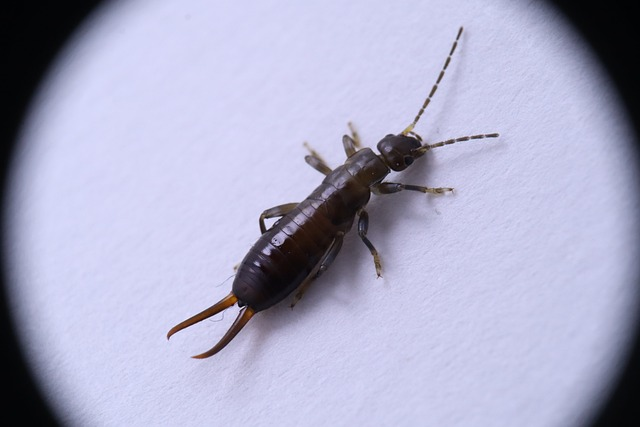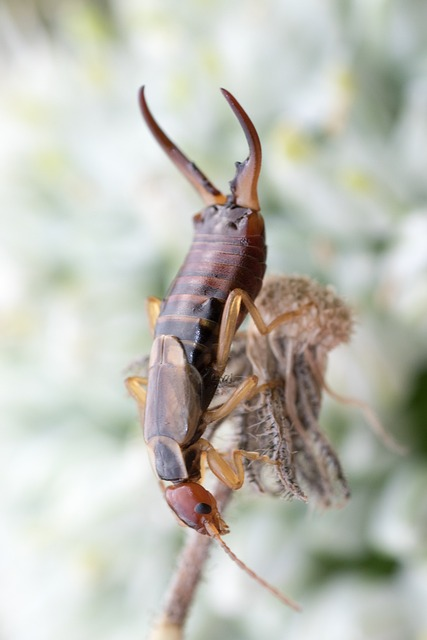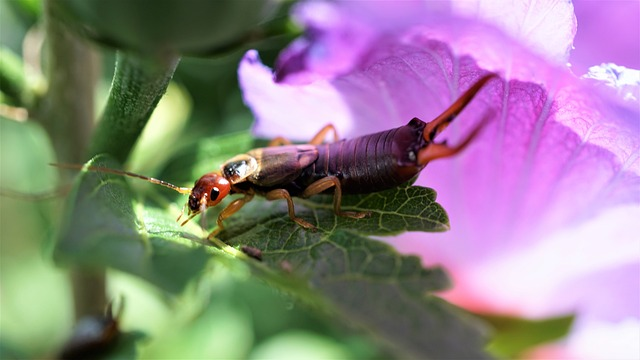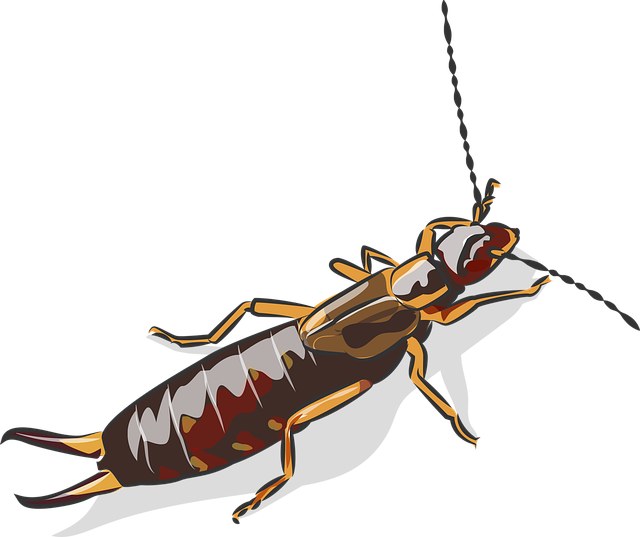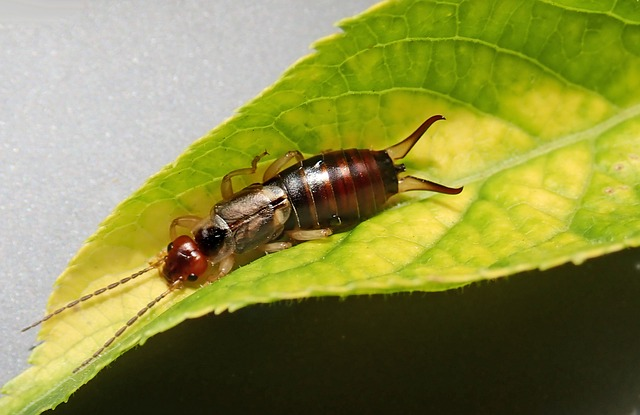Earwigs – those creepy, crawly insects with pincers that can wreak havoc on your garden and infiltrate your home. These pests may not be as harmless as they appear, causing damage to plant leaves and decaying wood, and sometimes causing a full-blown earwig infestation. But fear not! In this blog post, we will delve into the world of earwigs, uncovering the truth behind their behavior and exploring effective methods on how to get rid of earwigs, to eliminate and prevent them from taking over your cherished spaces.
Get ready to embark on a journey into the fascinating world of earwigs, where you will discover the causes of earwig infestations, learn how to identify an earwig problem, and arm yourself with effective methods on how to get rid of earwigs, to eliminate and prevent them from wreaking havoc in your garden and home. Say goodbye to these unwelcome guests and reclaim your peaceful sanctuary!
Short Summary
- Understanding earwigs is important for controlling and preventing infestations.
- Proactive steps such as sealing potential entry points, reducing moisture levels and maintaining a neat yard can help prevent future infestations.
- When DIY methods fail, contact a licensed pest control professional for expert advice in eliminating an earwig problem.
Understanding Earwigs
Earwigs are elongated, flattened insects with six legs, and most notably recognized for their cerci or pair of curved pincers located at the end of their abdomen. Some species have wings, while others do not. These pincers can be used to kill earwigs. Earwigs are omnivorous and consume decaying organic matter, plants, seeds, aphids, maggots, nymphs, and small worms. They may be detrimental to your plants or infest your home, leading to a pest infestation.
Originating in Europe and now distributed worldwide, earwigs inhabit outdoor, moist areas, where they feed on decaying vegetation and other insects. They thrive in cool and damp environments, which earwigs prefer, and can often lead to them finding their way into your home in search of warmth or moisture. A common myth surrounding earwigs is their alleged tendency to burrow into human brains through the ear canal, but rest assured, this claim is purely fictitious.
A single female earwig can produce between 20 and 80 eggs per clutch, with the eggs hatching after approximately one week. They will not dissipate without intervention; these pincher bugs need to be controlled using various methods such as traps, pesticides, or natural remedies. With more than 20 species of earwigs present north of Mexico, only a few are typically considered to be common pests in North America.
Causes of Earwig Infestations
Earwigs are attracted to moist environments with abundant hiding spots and food sources. These damp conditions provide the perfect breeding ground for earwig infestations. They can cause damage to ripe tree fruit by burrowing into them, and a petroleum jelly trap can be applied around the tree trunk to effectively deter earwigs from accessing the fruit.
Strategies to reduce earwig presence in your yard include:
- Minimizing food sources and hiding places
- Spraying the leaves of plants with soapy water
- Coating stems of plants with petroleum jelly
- Encouraging birds to inhabit the yard
By understanding the factors that contribute to earwig infestations, you can better protect your home and garden from these unwelcome pests.
Identifying an Earwig Problem
Recognizing the signs of an earwig problem is crucial in combating these pests. Here are some signs to look out for:
- Earwigs emit a foul, excrement-like odor when disturbed.
- They are typically located in damp, shadowy places, such as the damp soil of indoor houseplants, underneath wet rugs and carpets, and in the baseboards of bathrooms and kitchens.
- Outdoors, they may be found beneath paving stones, tree bark, inside dead logs, and in crevices in the soil.
Earwigs are attracted to bright illumination at night. Turning off porch lights (and interior lights) when not in use during the night is a successful approach to deter them from entering your home. By being aware of the signs of an earwig problem, you can take the necessary steps to address the issue before it escalates.
Inspecting Your Home for Earwigs
When inspecting your home for earwigs, focus on areas with high moisture levels and darkness, such as the damp soil of indoor houseplants, beneath wet rugs and carpets, and in the baseboards of bathrooms and kitchens. Earwigs infest houses by gaining access through cracks, gaps, and holes in doors and windows that have not been properly sealed, unscreened vents, and doors leading to crawl spaces.
Be vigilant in searching for wet spots and areas with standing water, as these locations are prime hiding spots for earwigs. By thoroughly inspecting your home and addressing any potential entry points, you can significantly reduce the likelihood of an earwig infestation taking hold.
Checking Your Garden for Earwigs
In your garden, earwigs are typically located in damp garden mulch, underneath rocks, and near wood piles and other debris. Examine leaves and flowers for ragged edges or holes, as this could be an indication of earwig damage. To catch earwigs in the act, consider placing light-colored cloths beneath infested plants and shaking the branches.
Controlling earwigs in your garden is crucial to maintaining the health and beauty of your plants. By being vigilant in checking your garden for these pests and addressing any signs of damage, you can prevent a large-scale infestation from taking hold.
Effective Methods to Eliminate Earwigs
Now that you have identified the presence of earwigs in your home or garden, it’s time to tackle the problem head-on. There are three main approaches to eliminate earwigs: using traps, applying pesticides, and employing natural remedies. Each method has its advantages, and depending on the severity of the infestation and your personal preferences, one or more of these strategies may prove effective in controlling earwig populations.
In the following sections, we will explore each of these methods in detail, providing you with a comprehensive guide on how to effectively eliminate earwigs from your home and garden. With the right tools and strategies in hand, you can say goodbye to these pesky pests and restore peace and tranquility to your living spaces.
Using Traps
One effective method to catch and kill earwigs is by creating traps. To construct a lighted earwig trap, follow these steps:
- Fill a bucket with a mixture of 4 parts warm water and 1-part dish soap, stirring until it is foamy.
- Put the bucket outdoors and shine a light on its soapy contents. This will enable an optimal detection of any items within the water.
- This will attract earwigs, which will drown in the bucket.
Another way to trap earwigs is to place a piece of wet cardboard or a sticky barrier such as tape in areas where they are known to frequent. Positioning a bright light near the traps can further enhance their effectiveness. With these simple traps, you can significantly reduce earwig populations and protect your home and garden from further damage.
Applying Pesticides
Pesticides can be an effective means of controlling earwig populations. Some effective pesticides for eradicating earwigs include:
- Sevin
- Malathion
- Pyrethrins
- Diazinon
The evening is the most beneficial time to apply treatments prior to the earwig’s feeding habits commencing.
If you are hesitant about how to apply insecticides or whether they can be used indoors or around humans, it is advisable to test the substance on a small area or to consider enlisting the services of a professional. By using pesticides responsibly, you can effectively eliminate earwigs from your home and garden.
Natural Remedies
For those who prefer a more natural approach to earwig control, food grade diatomaceous earth and certain household ingredients may be effective solutions. Diatomaceous earth is a natural insecticide. It will eliminate earwigs on contact. It can be applied over regions where earwigs have been observed.
Another natural remedy is boric acid powder, an organic insecticide that eradicates earwigs upon contact. To maximize effectiveness, sprinkle the powder in areas where earwigs are likely to traverse, such as along baseboards. By employing natural remedies, you can effectively control earwig populations without resorting to harsh chemicals.
Prevention Strategies for Earwig Infestations
Taking steps to prevent future earwig infestations is crucial to maintaining a pest-free home and garden. It is recommended to seal potential entry points, control moisture levels, and maintain a neat and tidy yard. By addressing these factors, you can significantly reduce the likelihood of earwigs making a return appearance.
In the following sections, we will delve into each of these prevention strategies, providing you with practical tips and advice on how to keep earwigs at bay. With a proactive approach to prevention, you can safeguard your home and garden from these unwelcome visitors and enjoy a peaceful, insect-free environment.
Sealing Cracks and Gaps
Sealing cracks and gaps in your home is an essential step in preventing earwig entry. Caulk is an effective solution for sealing cracks and crevices. Using a caulking gun, caulk can be applied to cracks and crevices for optimal sealing. Diatomaceous earth can also be utilized to control moisture and serve as a barrier to keep earwigs out when sprinkled around cracks.
By thoroughly inspecting your home and addressing any potential entry points, you can significantly reduce the likelihood of an earwig infestation taking hold. With your home sealed tight, earwigs will have a much harder time gaining entry and causing problems.
Controlling Moisture
Controlling moisture in and around your home is crucial for deterring earwigs. Clogged gutters can create a moist environment that is appealing to earwigs, so ensure they are cleaned regularly. Additionally, ensure drains are positioned away from the foundation to avoid attracting earwigs to your home.
Taking steps to control moisture levels in your home and garden can make a significant difference in keeping earwigs at bay. By maintaining a dry environment, you can effectively discourage these pests from taking up residence in your living spaces.
Keeping a Tidy Yard
A tidy yard is essential for minimizing earwig hiding spots and food sources. Clear away leaves, grass clippings, and any decaying vegetation to provide fewer places for earwigs to hide and breed. Trimming bushes and shrubs may also be beneficial for reducing potential hiding places for earwigs.
Additionally, repair any leaking pipes or drains to reduce excess moisture in your yard. Employing a dehumidifier in your home can also be beneficial. By maintaining a neat and tidy yard, you can significantly reduce the likelihood of earwig infestations and protect your garden plants from potential damage.
When to Seek Professional Help
If you believe you have an earwig infestation and the methods described in this blog post have not been successful, it may be time to seek professional help from a pest control company. The best pest control companies possess the expertise and resources necessary to effectively eradicate any pest issue from your residence or garden promptly and securely.
Don’t let earwigs take over your home and garden. If you’re struggling with an infestation, it’s time to get rid of earwigs by reaching out to a pest control expert who can assess the situation and implement the most effective strategies to eliminate these pesky intruders for good.
Summary
In this blog post, we have explored the world of earwigs, their behavior, and the potential harm they can cause to your home and garden. We have also discussed the causes of earwig infestations, how to identify an earwig problem, and effective methods to eliminate and prevent them from taking over your cherished spaces.
By implementing the strategies and advice provided in this blog post, you can effectively eliminate earwigs from your home and garden and prevent future infestations. With a proactive approach to pest control, you can enjoy a peaceful, insect-free environment and protect your precious living spaces from these unwelcome intruders.
Frequently Asked Questions
What keeps earwigs away?
White vinegar and peppermint oil are effective deterrents to keep earwigs away.
What is the quickest way to get rid of earwigs?
Get rid of earwigs quickly by vacuuming the area, spraying with rubbing alcohol and water, sprinkling boric acid, removing excess moisture, setting a soy sauce trap, and repelling them with strong scents.
Vacuuming the area is an effective way to remove earwigs. Spray the area with a mixture of rubbing alcohol and water to kill any remaining earwigs. Sprinkle boric acid around the area to prevent them from returning. Remove any excess moisture from the area to make it less attractive to ear.
What attracts earwigs in your house?
Earwigs are often attracted to flower beds, gardens and other moist areas like decks or porches due to light. They may also hide under cedar siding or enter through areas of excess moisture such as bathroom cabinets or wet basements.
Removing these potential attractions can help keep earwigs from entering the home.
Why do I suddenly have earwigs in my house?
Earwigs tend to enter houses when seeking shelter, especially during periods of prolonged dry weather or in the fall. They don’t cause any harm or destruction, but they can be an annoyance and may emit a foul odor if disturbed.
What do earwigs eat?
Earwigs are omnivorous creatures that feed on a variety of substances, such as decaying organic matter, plants, seeds, aphids, maggots, nymphs and small worms.

